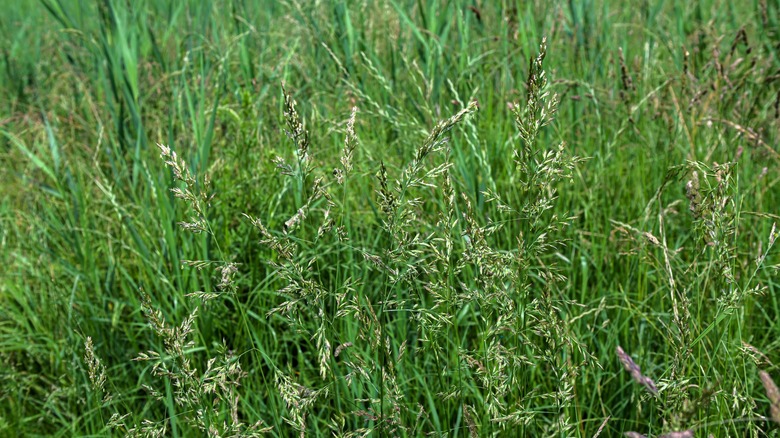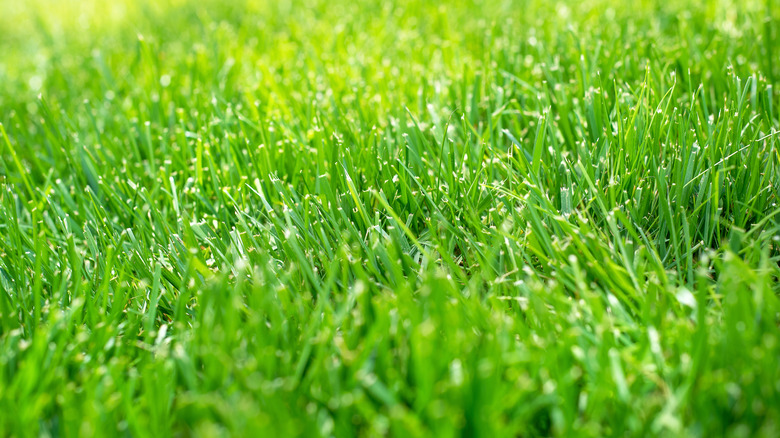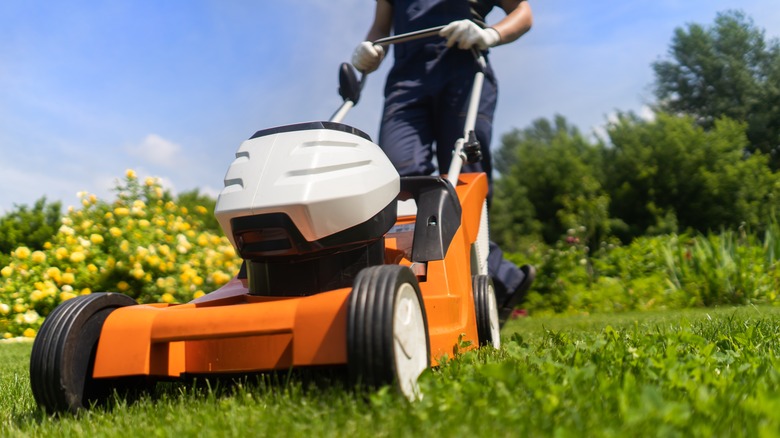The Best Method For Removing Stubborn Grass Seed Heads From Your Lawn
Grass is soft and gorgeous until those pesky seed heads pop up. As annoying as it may be, grasses are just like other seed-producing plants; they'll create seeds at the end of their lifecycles so their species can live on. However, as the lawn master you are, you can prolong this process and keep the seeds at bay to keep your grass lush and green. Make sure your grass is sufficiently watered, fertilized, and kept at a height that discourages weeds.
Mowing the lawn is a quick fix to get rid of seed heads once they pop. If you want to deal with them less often, you'll need to put in the effort to keep the lawn healthy from the very beginning, whether you start with seed or sod. Regular maintenance will keep the grass satisfied and reduce how often it goes to seed, which is crucial if you suffer from allergies since the seed heads create pollen. Since seeds typically develop at the end of the grass's life, you can assume your lawn is trying to tell you it's unhappy with its situation if it's going to seed in the middle of the growing season.
Keep the grass happy
Dense grass is the key to fewer weeds, so it's important to keep it watered. Morning is the best time of day to water the lawn to ensure the water has enough time to soak into the ground and prevent fungal growth on the surface. You don't need to water daily, but the type of soil you have will determine how often you need to water. Clay soil hangs onto water longer, so you may only have to water once a week, while sandy soils will likely need to be watered three times each week. Watering the lawn deeply will encourage deeper root growth and will allow you to water less often if you water deeply. New grass with shallow roots will need to be watered more often than mature grass with deep roots.
Fertilization is another important factor that will keep your grass growing happily. Every plant has unique nutrition requirements to grow. Ensuring your grass has the right nutrients will prevent going to seed early. Once your grass does go to seed, you may notice changes in the look and feel of it, such as looking thinner or having rough stems. This is because forming seed heads requires the grass to use up energy (protein and sugar) differently than when it was just leafy grass. Giving your lawn some fertilizer after mowing down the seed heads will encourage new growth and will help your grass go back to "feeling" like its pre-seeded self.
Mow the lawn appropriately
If you're not a stickler for a pristine lawn, you may think there isn't a right or wrong way to mow it. But, if you want to stave off those allergen-producing seed heads, then there's definitely a right way to do it. Preventing seed heads is all about balance — don't cut it too low, and don't leave it too tall. The right length might look a little long, but letting it keep some height has tons of benefits. Allowing your lawn to keep some length will keep the soil shaded, preventing the water from evaporating, which will allow it to penetrate deep into the soil and encourage deeper root growth. Deep roots will take up all the soil room and will prevent weeds from growing. Weeds need sunlight to germinate and grow, so if a lawn is thick with grass, it won't stand much of a chance.
Even if you're mowing down seed heads, you should still keep the blade height relatively tall. Doing so will encourage proper growth, especially if you give your lawn a rejuvenating dose of fertilizer. You may leave some seed heads behind, depending on the type of grass you have, but allow the lawn to grow out a little more before mowing again to allow it to grow and let the seed heads get tall enough to be cut by the lawnmower.


